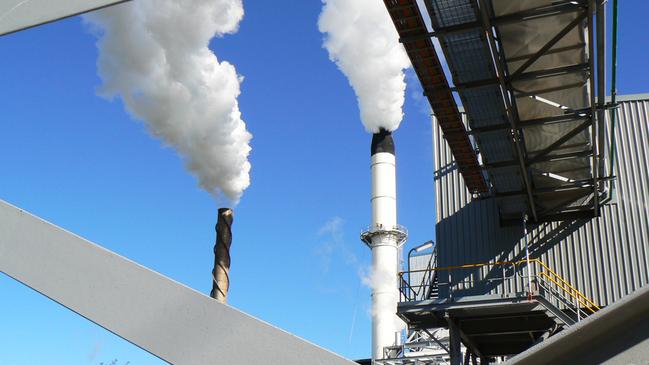Moving up the carbon capture value chain
As Melbourne plays host to energy policymakers from around the region and beyond to discuss carbon capture and storage, the prospect of regional cross-border trade in CO2 grows every day.

As Melbourne plays host to energy policymakers from around the region and beyond to discuss carbon capture and storage, the prospect of regional cross-border trade in CO2 grows every day.
The question is how we can make cross-border trade a reality sooner and at the scale to make a difference for economies and the environment.
CCS is a huge opportunity for Australia and the wider Asia-Pacific to deliver on greenhouse gas emissions reduction ambitions as a region. CCS will be essential for decarbonisation efforts in the APAC region, where, by 2050, it is projected to account for 60 per cent of mitigation potential, constituting up to three gigatonnes of CO2 per annum.
The technology and capabilities exist today to physically and safely capture, transport and store CO2. While this has long been practised in North America and Europe, cross-border CCS is only now emerging in the EU through projects like Norway’s Northern Lights.
It’s also a novel concept in the Asia-Pacific context, compounded by the complexity of regulatory variations between countries (both on CCS and carbon pricing policies). Some of the key challenges to date in scaling cross-border CCS in APAC have been in unlocking incentives and economic benefits available and the nascent policy and regulatory environment.
For cross-border CCS projects to be materialised commercially there are critical areas that need agreement between the governments of capturing and storing countries to provide certainty as well as flexibility for commercial parties to proceed.
Government-to-government agreements are important in providing clarity for commercial CCS agreements to proceed on crucial issues.
These include the types of certifications that can be used, how to ensure there is no double-counting of emissions reductions and clarification of long-term liabilities in the event of leakages.
These questions will be discussed at length on July 9 and 10 in Melbourne at Carbon Capture APAC 2024, a major international event bringing together key participants from Australia, Norway, Scotland, Japan, Singapore, South Korea, Indonesia and Malaysia.
At the Asia Natural Gas & Energy Association (ANGEA), we have been working with government, industry, think tanks and multilateral banks to develop a regional framework that addresses these essential questions.
That framework will be published in the coming months to inform the development of bilateral and – hopefully at some point – multilateral agreements.
Aside from commercial and policy requirements that must be addressed, some ask why countries should store other nations’ emissions. Let me give just a few reasons.
Australia’s emergence as a CCS hub would allow long-time allies like Japan, South Korea and Singapore to decarbonise hard-to-abate industries such as steel and cement-making, which will be critical to meeting the goals of the Paris Agreement. These countries have the ability to capture emissions but lack storage capacity.
Cross-border CCS is not just an important pathway to supporting industrial decarbonisation but a significant economic opportunity. According to research by Boston Consulting Group, CCS in APAC can support up to 300,000 jobs and add up to $US220bn ($330bn) in GDP annually by 2035.
Just as LNG investment from customers such as Japan and Korea makes offshore gas projects economic for domestic consumers, providing CO2 transport and storage services will improve the economics of domestic storage hubs, lowering the cost of emissions storage for Australian industries.
Carbon capture will also be central to the development of hydrogen and ammonia as low-carbon energy sources for Asia. For Australia, becoming a storage hub for the region will create new industries and sources of jobs and revenue, strengthening its position as a sustainable centre for green technology and low-carbon energy development.
Australia has a huge storage capacity advantage, which if regulated and used effectively can unlock a leading role in domestic and cross-border carbon storage.
It’s estimated Australia could have storage capacity for as many as 20 billion tonnes of CO2 and it has industrial and workforce capabilities to make good use of that space.
While nations like Malaysia and Indonesia have similar storage capacity and cost advantages, there are more than enough emissions to be stored in the region. Countries that position themselves as strategic storage hubs, capable of scaling up to reduce costs and seamlessly accepting CO2 from multiple regional sources, will benefit most.
When Japan turned to LNG in response to the oil crisis of the 1970s, many doubted its potential. However, it proved remarkably successful, providing low-carbon, reliable energy that fuelled Asia’s growth for decades.
It is our belief that just as industry and government worked to overcome challenges associated with developing the LNG value chain, we can do the same to deliver a robust and sustainable carbon capture and storage industry in Australia and across Asia.
Concerted and co-ordinated action on policy and regional co-operation involving all players in the cross-border value chain will be crucial to realise the full potential of Australia’s CCS opportunity.
We should not leave it to chance.
Alex Yelland is director of policy and advocacy at the Asia Natural Gas & Energy Association and a speaker at the Carbon Capture APAC 2024 in Melbourne on July 9 and 10.



To join the conversation, please log in. Don't have an account? Register
Join the conversation, you are commenting as Logout